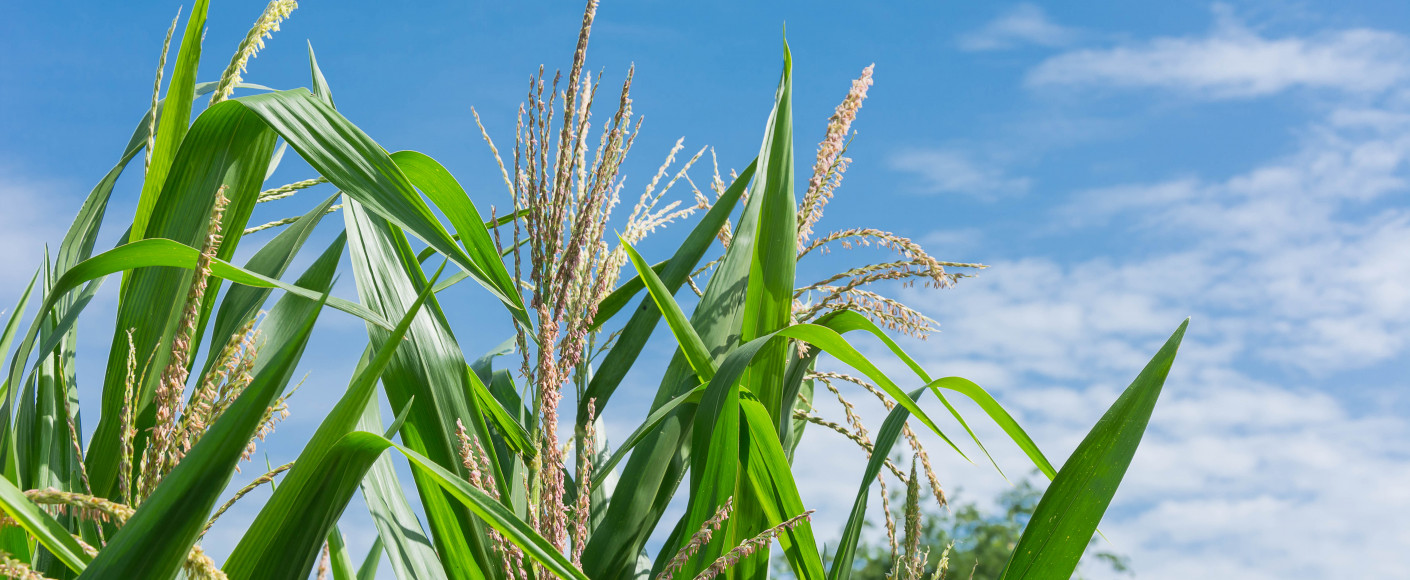Crop Pollination
A candlelit dinner. Rose petals. Soft music. When it comes to setting the mood for a romantic evening, we know all the right moves.
Since love is in the air this time of year, we thought we’d take a peek at what happens between the seeds of some staple Kansas crops. Corn, wheat, sorghum, and soybeans—all they need is the right temperature, the right moisture levels, and a little wind to make the magic happen.
A Quick Biology Lesson
If it’s been a minute since you took high school biology, here’s a quick (we promise!) refresher:
- Pollen is the male genetic material of plants, located in the stamen. Female genetic material is located in the pistil, which contains ovules, or florets.
- Self-pollination is when pollen from a plant fertilizes its own florets.
- Cross-pollination is when pollen is carried from one plant to another and fertilizes ovules in the second plant.
- Wind-pollination is a type of cross-pollination where the pollen is carried on, you guessed it, the wind. (And if there’s one thing we have a lot of in Kansas, it’s wind!)
Because the plants of major Kansas crops contain both male and female parts, they can self-pollinate or wind-pollinate. Unlike plants like apples, cherries and squash that have to have brightly-colored, fragrant flowers to attract bees, these staple crops just need a little wind to spread the love.
The basics are pretty simple:
- Plants release pollen.
- The pollen makes its way to the florets.
- The pollination often, but not always, results in fertilization.
- If they’re lucky, the fertilized florets will survive environmental stresses like heat and drought to develop into mature grains.
But within that process, each crop is a little bit different. So, let’s get up close and personal with some common Kansas crops.
Corn
- The male and female parts of the plant are located in different areas. Pollen is produced in the tassel—the tall, fuzzy looking yellow growth at the top—and ovules are located in the ear.
- Each ovule has a silk attached that’s designed to carry the pollen down to it. When fertilized ovules mature, they become kernels.
Wheat
- Wheat self-pollinates before the flowers open, making cross-pollination rare. Plant breeders manually cross-pollinate wheat for desired traits and genetic diversity.
- Pollen is only viable for a short window of time—anywhere from just a few minutes to a few hours.
- The process for an entire head of wheat to pollinate takes about four days because the plant blooms in stages.
Sorghum
- The flowering portion of the plant—the head—is encased in a flag leaf sheath. As the plant grows, a shaft called the peduncle pushes the head up through the sheath.
- Pollination starts at the top of the plant and moves its way down. It takes six to nine days for the entire plant to become pollinated.
- Sorghum tends to pollinate early in the morning. Plants typically become fertilized six to 12 hours after pollination.
Soybeans
- Although wind and insects can contribute to cross-pollination, it doesn’t spread soybean pollen very far. So, most soybean plants rely on self-pollination before their flowers even open.
- For example, if a soybean had 300 flowers, about on-third would successfully pollinate and about one-third of those would form pods.
- Although insects can help pollinate soybeans, and soybeans have small, purple or white flowers, the flowers don’t produce much nectar and therefore don’t attract much interest from bees.
Sure, pollination seems much easier for plants than humans. (Have you ever heard of an ear of corn wondering what to wear to dinner and a movie?) But then again, they are in a delicate balance with their environment. Hopefully the next time you pick up an ear of corn, a bag of wheat flour, a bottle of vegetable oil, or a jar of sorghum syrup at the store, you’ll have a new appreciation for what these plants go through just to do what comes naturally.

